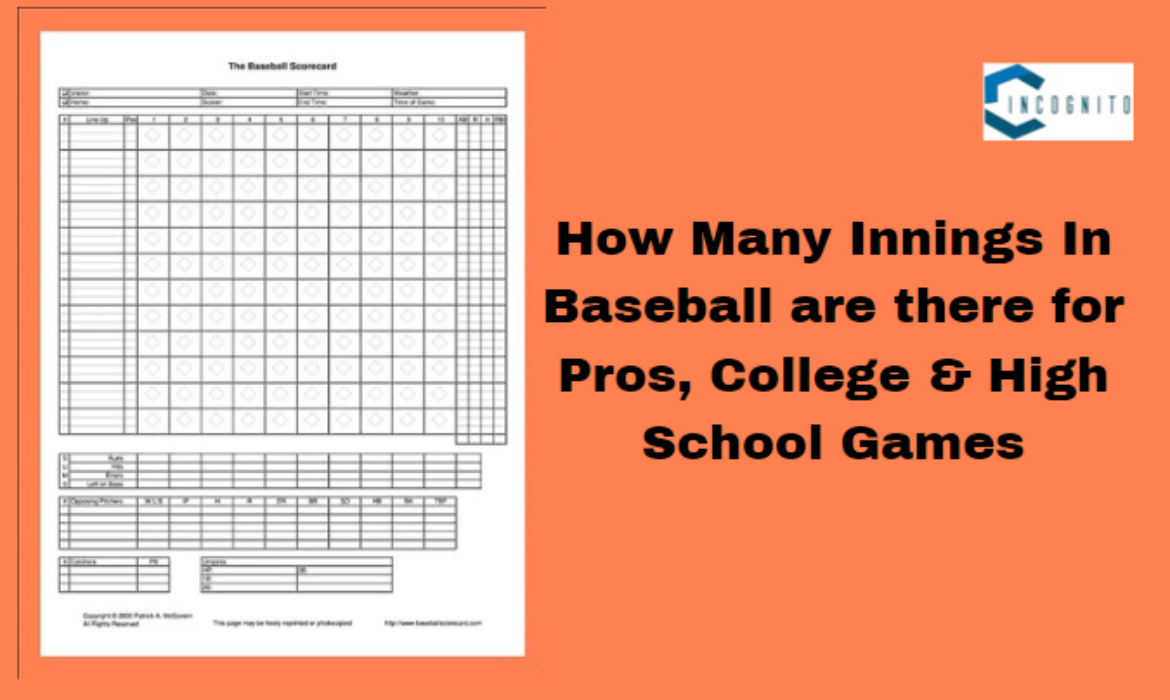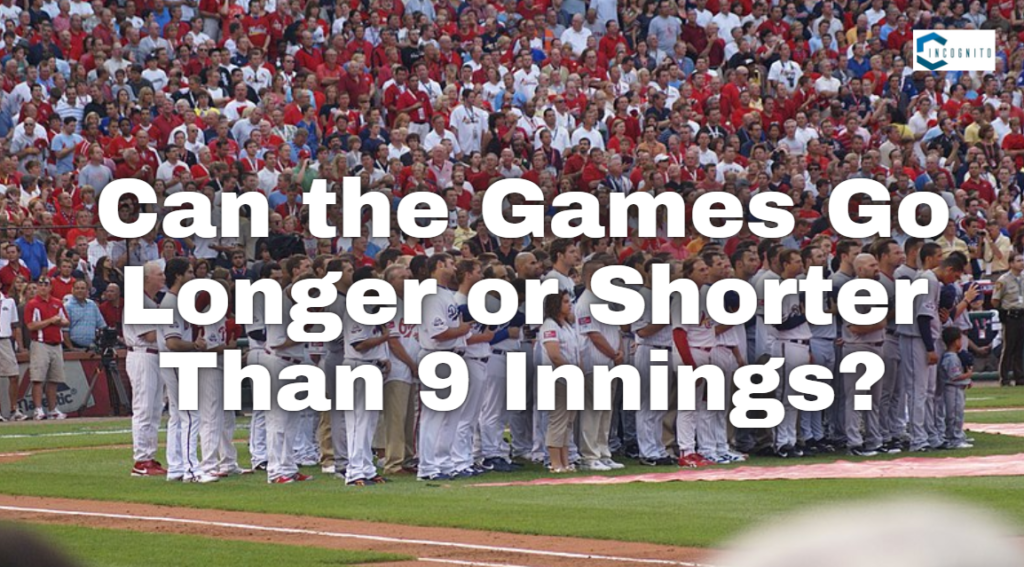
Baseball comes in parts or “innings.” Every inning lets both teams bat and score runs. Yet, how many innings in baseball game? It can change, and it’s based on whether it’s a pro, college, or high school match. This post will outline the innings for each type and touch on common baseball innings questions. So, get some peanuts and cracker jacks, it’s time to hit the diamond! (baseball pitch) Let’s kick things off with professional baseball. (MLB)

For Professional Games
How Many Innings In Baseball For Professional Games
Pro baseball players such as Gerrit Cole and Shohei Ohtani play in the big leagues. A usual game has nine innings. Each team bats and scores nine times, swapping offense and defense.
There’s a point to this set figure. It offers a fair shot at victory for every team, while not dragging on. A nine-inning match allows plenty of chances for cool plays, exciting moments, and a pleasing finish.

For College Games
How Many Innings In Baseball For College Games
Just like pro baseball, college games aim for nine innings. But there’s a twist with NCAA games. Some unique rules include:
- The Mercy Rule: it applies if a team is 10 runs or more ahead after seven innings. The game ends, saving the winning team’s pitchers for future matches.
- Doubleheaders: colleges sometimes play two matches in one day. To save time, they might reduce each game to seven innings. This way, they can finish two games without making the day too long.
- Conference Rules: certain athletic conferences in colleges might set specific game length rules. They could either push for full nine-inning games or more often, seven-inning doubleheaders.
So, while the aim is nine innings, college baseball has some cheat codes depending on the score or schedule.

For High School Games
How Many Innings In Baseball For High School Games
In high school baseball, the approach is a bit unique compared to college or professional levels. Games have seven innings usually, reflecting the players’ skill levels and fitting into the school day. High schools may also apply a mercy rule, like college level, to avoid long, one-sided games.
The run gap for this rule might differ based on the league or state, with 10 to 15 runs after 4 or 5 innings, being a common gap. Think about this: some high school leagues set fixed time limits on games, say 1 hour 45 minutes, for example. If a game is tied at the end of a complete inning when the time limit hits, it could result in a tie.
In essence, high school baseball aims to balance fair competition with managing the time demand of a game, considering the players’ age and busy timetables.

Where Did The 9 Innings Rule Come From?
Find out how much a tennis athlete earns: Jessica Pegula Net Worth: How Rich is the Tennis Star
Where Did The 9 Innings Rule Come From?
Baseball’s 9-inning rule format has unknown origins (like the tennis one, 15, 30, & 40), tracing to mid-1800s beginnings. Here’s the gist:
- Old School Baseball: Instead of set rules, games went until a score like 21 runs was hit. This resulted in games of varying lengths, even ending in darkness!
- The Knickerbocker Regulations: In 1857, a baseball fan group named the Knickerbocker Club penned rules for game consistency. This involved the now-known nine innings, but the ‘why’ behind the selection remains unclear.
- Potential Influences: Some guess the inning concept might relate to cricket, a similar bat-ball game with orderly innings. Also, nine innings could have served as a nice middle ground of creating a full game while keeping time in check.
Now, about going beyond nine innings:
Let’s chat about baseball games that go into overtime. In both pro and college baseball, and sometimes even high school, tied games push into extra innings. This is how it works:
- If the two teams are locked in a tie after the usual nine innings, they keep playing. One inning at a time, until a decisive victory is scored. How? If one team manages to get more runs in one inning than the other did in their last half-inning. This scenario often happens in heart-stopping games that beat the standard nine-inning outline.
- But there are exceptions. Some high school games have a time limit causing a draw if the scores are even after a complete inning when time runs out. Pro baseball’s spring training games are another case. These games might end in a tie after nine innings just to manage the athletes’ pre-season workload.
So, nine innings may be the norm, but baseball matches can dip under or go above depending on the rule-set, level of competition, and of course, the match’s score.
Innings End,
We’ve looked at how innings differ from pro (9 innings), college (usually 9, but mercy rules apply), and high school (7 innings, subject to mercy rule) games.
Why 9 innings? It’s not too clear, yet, it offers a fair mix for an interesting game. Don’t forget, pro and college games can extend into extra innings for more fun! High school games, however, may have time limits or other aspects that shorten the game. So, when you’re off to a game, you’re prepped to follow the game’s flow and guess the number of innings likely to be played!
Until next time, fellow baseball fans, Howdy!
For more sports related news, check this out: Highest Paid NFL Players of ‘24 Season, (Only Offense Positions)





